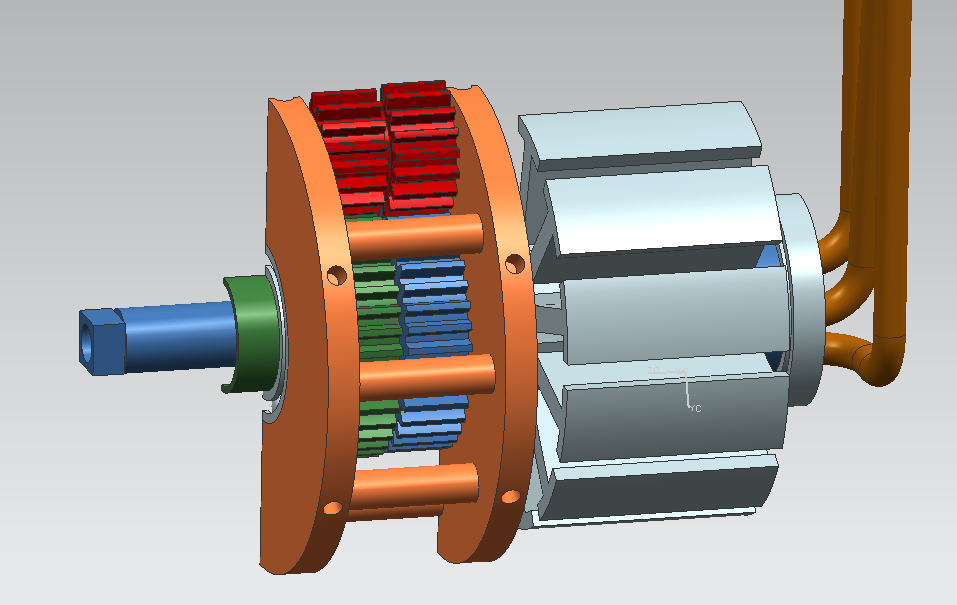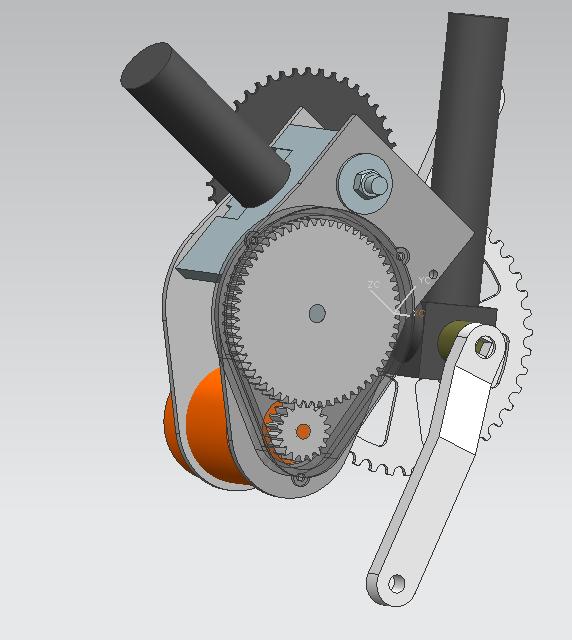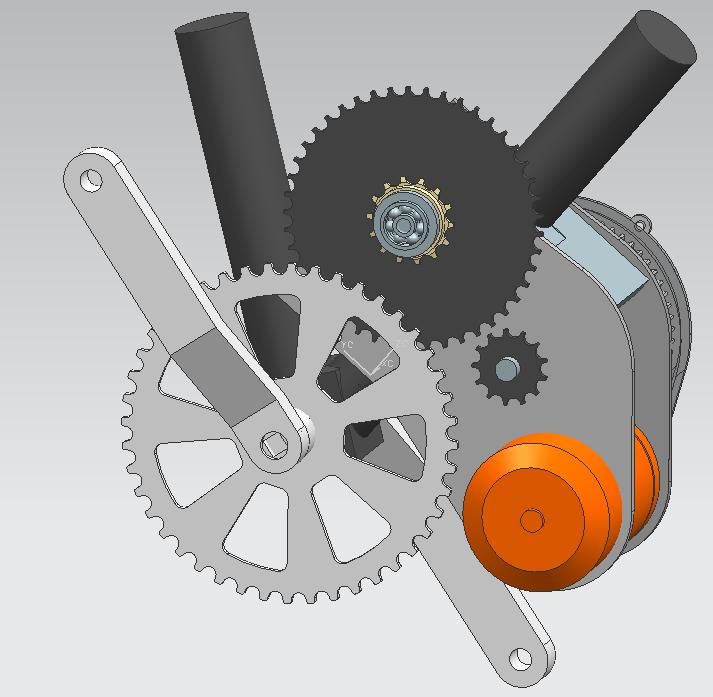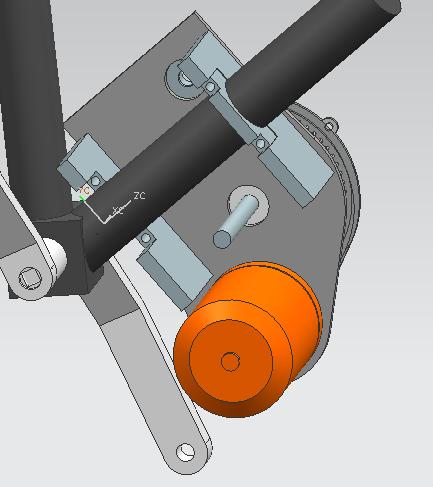crossbreak
1 MW
The teeth forces in this configuration are very high, as I already mentioned, a ring gear version would have to cope with less stresses. Sadly the design isn't as clean:
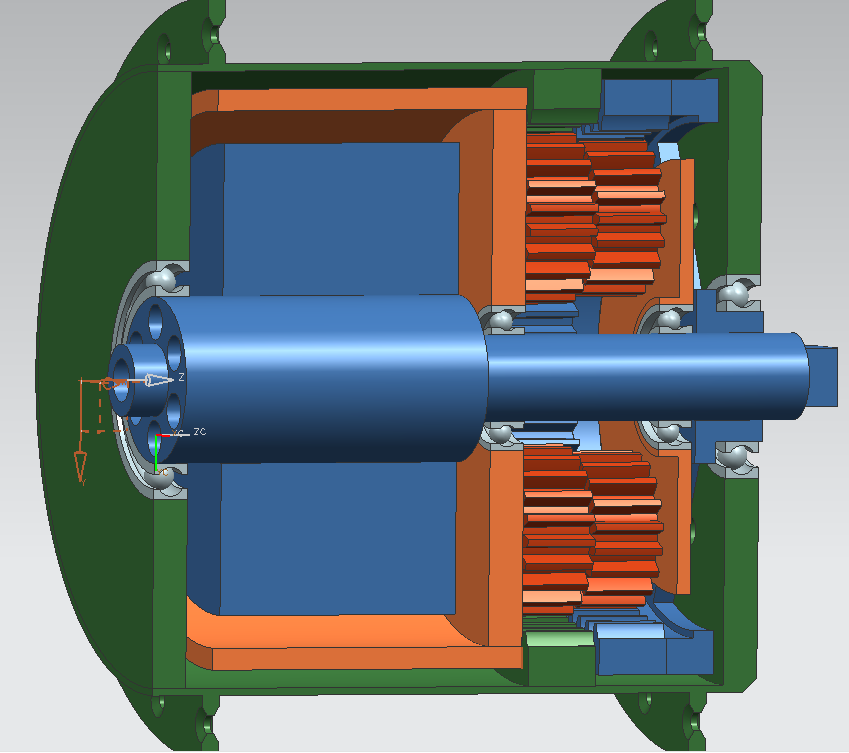
another approach is to use a single planetary doublegear with very little offset:
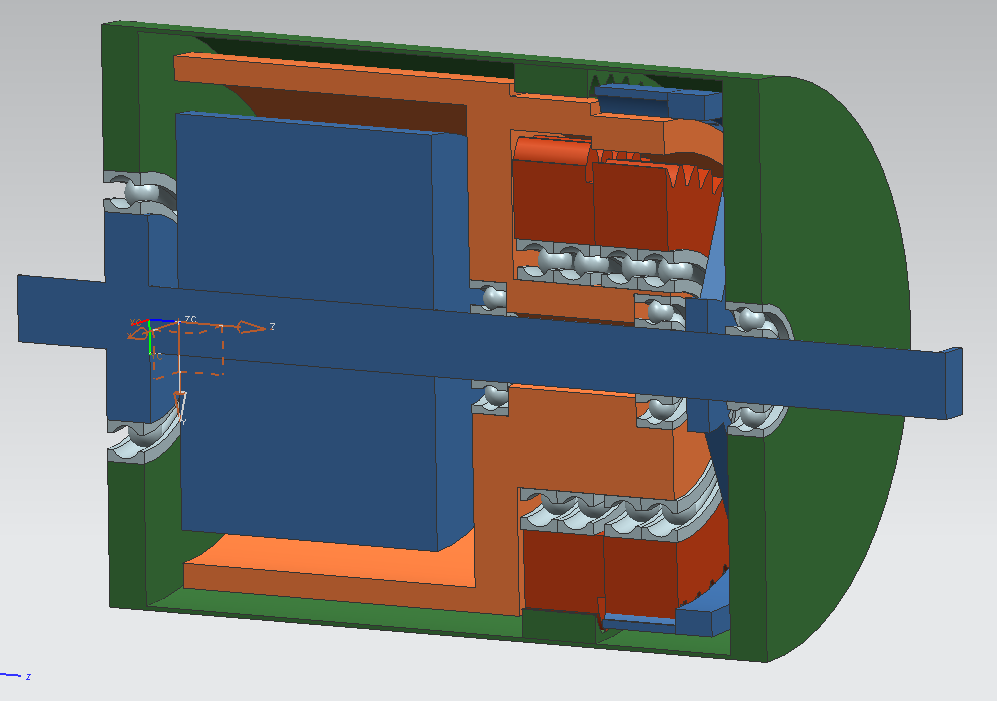
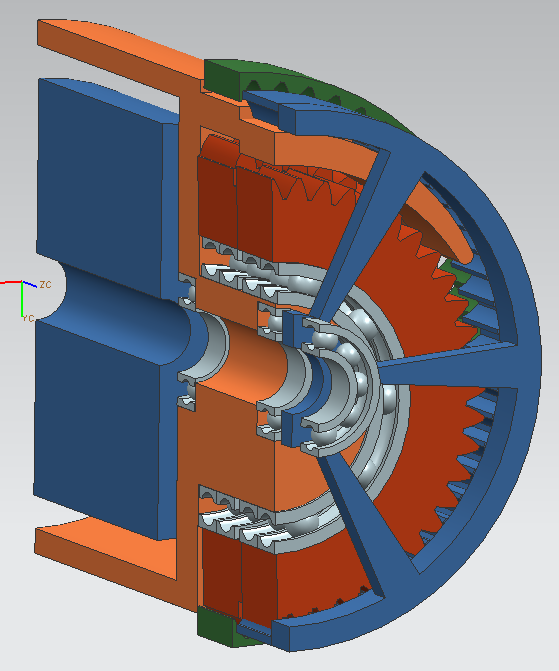

another approach is to use a single planetary doublegear with very little offset:




